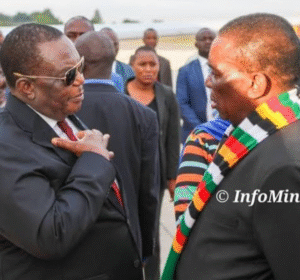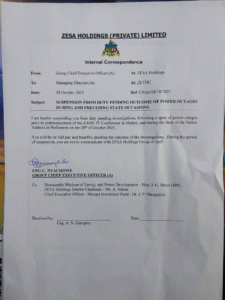ZIMBABWE EMBARKS ON A GOLDEN JOURNEY: INTRODUCING THE ZiG CURRENCY TO REVIVE THE ECONOMY

In an ambitious move to curb the longstanding economic distress marked by severe currency volatility and inflation, Zimbabwe has taken a bold step by launching a new currency unit, the Zimbabwe Gold (ZiG). This groundbreaking initiative aims to stabilize the nation’s economy, which has been in turmoil for more than two decades due to a series of financial crises and hyperinflation.
Zimbabwe’s journey through economic challenges has been complex, featuring various iterations of its currency, including bearer’s cheques, traveller’s cheques, special agro-cheques, and bond notes. However, these were merely stopgap measures in a failing economy characterized by an intricate web of payment methods and persistent inflation, which severely eroded the value of its local currency.
The introduction of ZiG marks a pivotal change in Zimbabwe’s financial landscape. This initiative is led by the new Reserve Bank of Zimbabwe (RBZ) governor, John Mushayavanhu, who announced the issuance of ZiG notes and coins in denominations ranging from 1ZiG to 200ZiG. These new currency units will be distributed through standard banking channels, with coins to follow shortly. The initial exchange rate of ZiG will reflect the closing interbank exchange rate as of 5 April and the London PM Fix price of gold as of 4 April 2024.
Governor Mushayavanhu’s announcement is backed by a statutory instrument, ensuring the legal grounding of this move. According to this framework, the value of one ZiG at its launch will be equivalent to one milligram of 99% pure gold, calculated based on the spot price of gold and the prevailing interbank foreign exchange rate.
The RBZ has outlined a robust support system for the ZiG, with the currency fully anchored by a composite basket of reserves, including foreign currency and precious metals, predominantly gold. This reserve basket is bolstered by in-kind royalties and market purchases from surrender requirements, offering a substantial safety net for the new currency. As of 5 April 2024, the RBZ’s reserve assets include US$100 million in cash and 2,522 kg of gold, valued at US$185 million, providing more than triple the cover for the ZiG currency being issued.
Furthermore, the RBZ plans to use 50% of foreign currency proceeds from surrender requirements for strategic interventions in the foreign exchange market. This measure, along with standardized foreign currency retention thresholds and adjustments in statutory reserve requirements, aims to foster financial stability and mitigate risks associated with increased foreign currency lending.
The transition to ZiG will involve converting current Zimbabwe dollar balances, loans, and other financial instruments into the new currency. This conversion process is guided by the interbank exchange rate and the price of gold as of 5 April 2024, ensuring fairness and transparency. The new currency will co-circulate with other foreign currencies, enhancing the flexibility and inclusivity of Zimbabwe’s financial system.
For ordinary Zimbabweans, the transition to ZiG represents a significant shift, requiring time to adapt to the new currency and its relation to major currencies like the USD. However, this change promises a new era of financial stability and growth, anchored by the intrinsic value of gold and aimed at simplifying, certifying, and predicting monetary and financial affairs in Zimbabwe.
As the nation watches closely, the success of the ZiG could not only revitalize Zimbabwe’s economy but also serve as a model for other countries grappling with similar financial challenges. In this golden journey, Zimbabwe embarks on a path toward economic revival, hoping to restore confidence in its currency and secure a prosperous future for its people.




